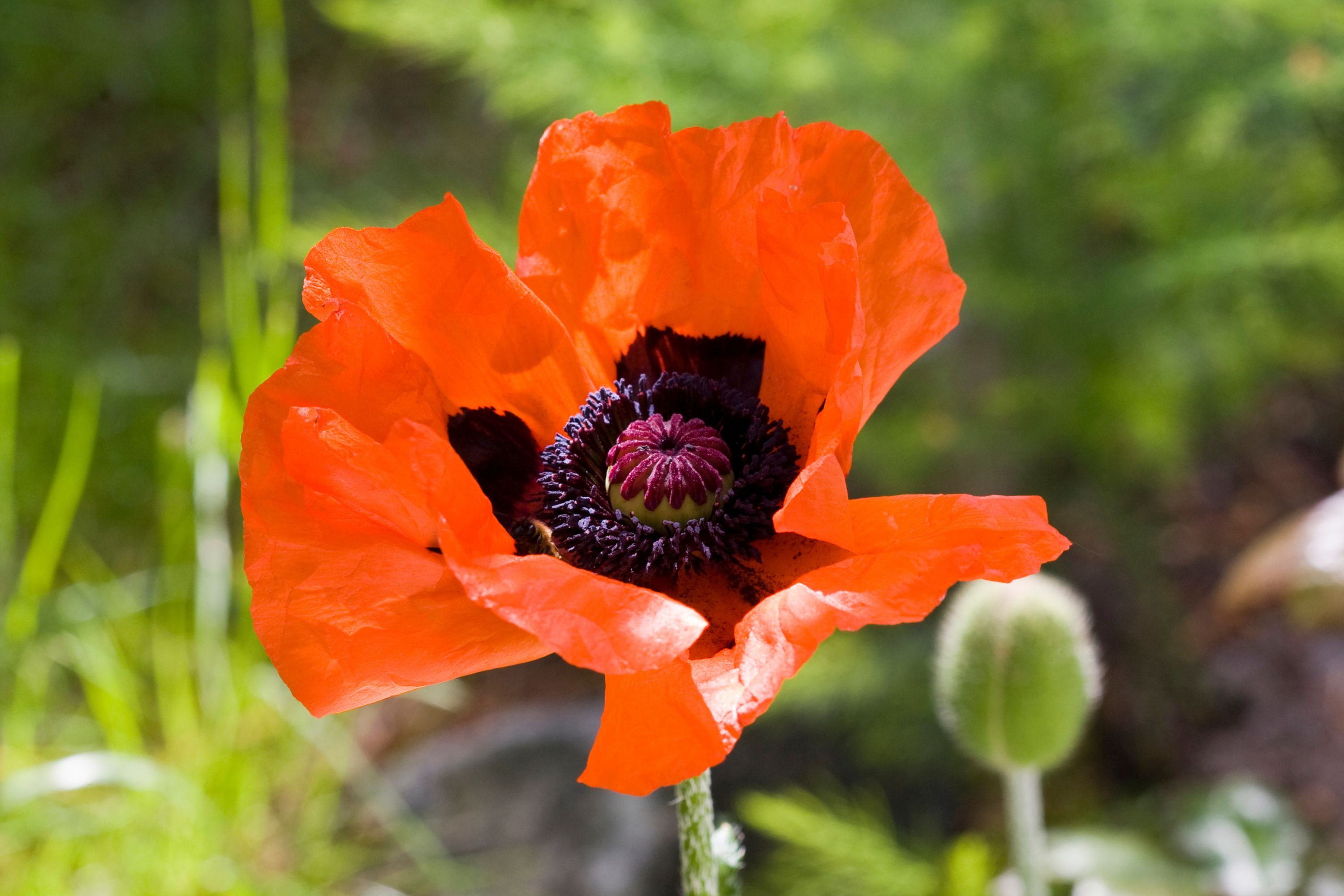Oriental poppy
(Papaver orientale)

Description
Papaver orientale, commonly known as Oriental Poppy, is a perennial flowering plant native to central and eastern Asia. It belongs to the family Papaveraceae, which includes other species such as California poppy, opium poppy, and Iceland poppy. Oriental poppies are widely grown for their showy, large, and colorful flowers, which bloom in late spring and early summer, and for their hardiness and ease of cultivation. Description Oriental poppies are herbaceous plants that grow from a tuberous root system, which allows them to survive cold winters and drought periods. The plant can reach a height of 3 feet (1 meter) and a spread of 2 feet (60 cm), and has a basal rosette of finely cut, hairy leaves that can grow up to 12 inches (30 cm) long. The stems are hairy and branched, and produce a single, large flower at the end of each stem. The flowers of Papaver orientale are 4 to 6 inches (10 to 15 cm) in diameter, with four to six petals that are usually red, orange, pink, or white, and a black or dark purple center. The petals are papery and delicate, and tend to fall off after a few days, leaving a prominent seed capsule. The flowers are followed by narrow, elongated seed pods that contain small, black, kidney-shaped seeds. Cultivation Oriental poppies are easy to grow and require little maintenance once established. They prefer well-drained, fertile soil, and a sunny location, although they can tolerate some shade. They are hardy to USDA zones 3 to 8, and can withstand temperatures as low as -40°F (-40°C). The plants can be propagated by seed or division, and should be planted in the fall or early spring. When planting Oriental poppies, it is important to space them at least 2 to 3 feet (60 to 90 cm) apart to allow for adequate air circulation and prevent overcrowding. The soil should be loosened to a depth of 8 to 10 inches (20 to 25 cm), and amended with compost or well-rotted manure to improve fertility and drainage. The tubers should be planted 1 to 2 inches (2.5 to 5 cm) deep, and watered thoroughly after planting. During the growing season, Oriental poppies require regular watering, especially during dry spells. However, they do not tolerate waterlogged soil, and should be grown in areas with good drainage. Deadheading the spent flowers will encourage the plant to produce more blooms, and will also prevent self-seeding. In the fall, the leaves will turn yellow and die back, and the plant will become dormant. The dead foliage can be cut back to the ground, and a layer of mulch can be added to protect the roots from freezing. Uses Oriental poppies are primarily grown as ornamental plants, and are valued for their striking flowers and low maintenance requirements. They are often used in mixed borders, cottage gardens, and rock gardens, and can also be grown in large containers. They make excellent cut flowers, and can be used in floral arrangements or as a focal point in a vase. In addition to their ornamental value, Oriental poppies have been used in traditional medicine for their analgesic and sedative properties. The plant contains alkaloids such as morphine and codeine, which are used in the production of painkillers and other medications. However, it should be noted that the use of poppies for medicinal purposes is highly regulated, and should only be done under the supervision of a trained healthcare professional.
Taxonomic tree:







